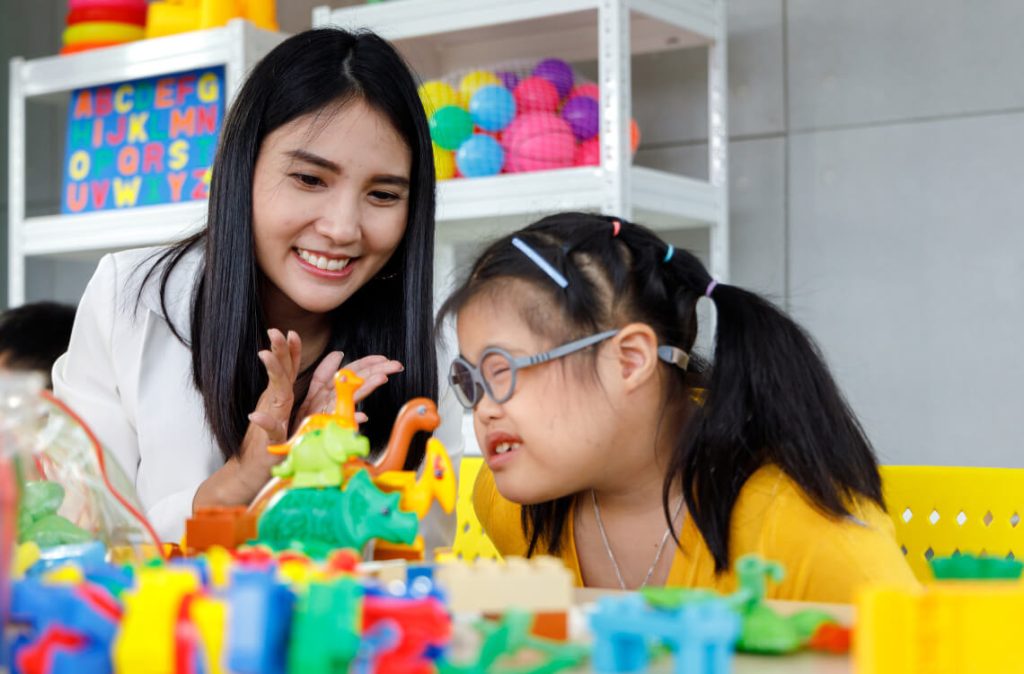You’ve seen them before, and you may know what it is on the surface, but you might not fully comprehend the condition that people with Down syndrome go through.
That is why misunderstandings about people with Down syndrome are common due to a lack of awareness and discourse.
Even if you don’t personally know anyone with the condition, learning about the causes and challenges will give you an insight into their world.
Let’s begin with its definition. Down syndrome or Down’s syndrome is also medically known as trisomy 21. It is a genetic disorder that develops in infants who have all or some of the third copy of chromosome 21.
The presence of that extra copy can alter how the baby’s brain and body develop. This could lead to delays or problems in the child’s physical and mental development.
What Happened to Cause Down Syndrome
Through the act of reproduction, both parents pass on their genes to their children. The genes are distributed among 23 pairs of chromosomes, for a total of 46 chromosomes.
In newborns with Down syndrome, one of the chromosomes does not completely separate; resulting in three copies of Chromosome 21 instead of the normal two.
Even though this happens during the foetal growth phase, it is not caused through gene inheritance. Except in rare situations where mothers are carriers of the abnormal Chromosome 21.
The condition is classified into three types: Trisomy 21, Translocation Down syndrome, and Mosaic Down syndrome. Due to the similarity of the physical characteristics and behaviours, it is frequently impossible to distinguish between each kind without looking at the chromosomes.
In Malaysia, the incidence of down syndrome is 1:860 to 1:981 live birth, while the global estimate is 1 in 1,000 to 1 in 1,100 live births.
Each year, roughly 3,000 to 5,000 infants worldwide are born with this chromosome disorder. According to Mayo Clinic, babies born to older mothers are more likely to have certain genetic disorders, such as Down syndrome.
The disorder is usually discovered after the baby is born. But thanks to advancements in technology, the condition can now be detected during pregnancy using blood testing, thorough ultrasonography, or amniotic fluid analysis.
Some expecting mums opt to do the Down syndrome screening so that they can make the required preparations.
Nevertheless, even with all of the information and resources available, many myths regarding Down syndrome persist. It’s important to be alert to what they are so you don’t get misinformation.
What Are Some of the Popular Misconceptions
-
Myth: People with Down syndrome all look alike
In fact, many people with Down syndrome have physical characteristics that are affected. For instance, being shorter than normal, having almond-shaped eyes, and having smaller hands and feet than typical.
However, not all of them have comparable features, and the majority of them resemble their families rather than each other.
-
Myth: Kids with the condition cannot read or write
The majority of children with the disorder can still learn to read and write.
All they require is the assistance of well-trained professors who actually care about formally evaluating them. More extensive research, however, is required to determine efficacy.
-
Myth: A couple with a Down syndrome child will divorce
Caring for a kid with Down syndrome indeed calls for extra attention and special needs. Therefore, parents must be physically, cognitively, and emotionally prepared.
However, according to a study done in the US, the divorce rate in couples with Down syndrome children is much lower than it is in households without Down syndrome children.
-
Myth: Babies with Down syndrome are only born to older women
It has been scientifically shown that older pregnant women are more likely to birth a kid with Down syndrome.
However, younger ladies trying to get pregnant are not necessarily excluded from having a child with the disorder.
A woman who conceives at the age of 25 still faces a risk of roughly 1 in 1,250. It rises to roughly 1 in 100 for a woman who conceives beyond the age of 40.
Down Syndrome is Unexpected and Unpredictable
Unfortunately, there is no method to prevent Down syndrome, and it is also incurable. Why some babies are born with the disorder is a mystery to researchers.
If you are attempting to conceive and are concerned about your future child, try to learn how to keep the pregnancy healthy and what supplements you may take to help the baby’s development.
Also, be more mindful of any testing that will help you learn more about your baby’s situation. The sooner you are aware of any potential problem, the sooner you will understand what you can do about it. You’ve got this, mums!
Disclaimer: The information provided in this article is for informational purposes only and should not be considered as medical advice from Motherhood. For any health-related concerns, it is advisable to consult with a qualified healthcare professional or medical practitioner.
For more insightful stories and fun recipes, stay tuned to Motherhood Story!
